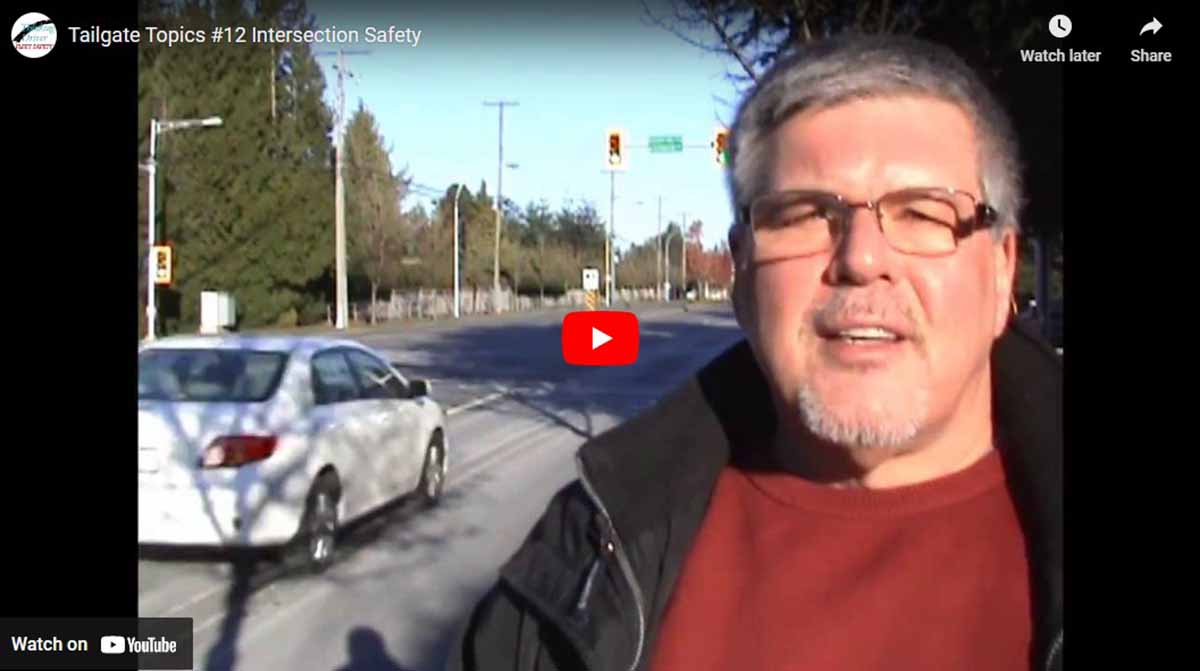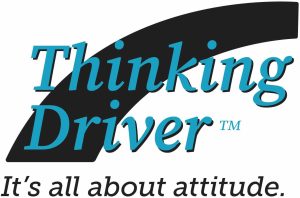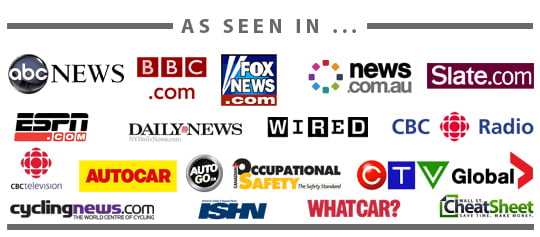Safety Meeting Planner & Agenda
Avoid Intersection Incidents!
Meeting Leader:
- Prepare in advance to make this meeting effective.
- Print and read over this entire agenda.
- Think about how you want to lead the meeting.
- Is there anything that is specific to your company or operation that you can include to personalize the information?
- Review the video for this session.
- Save the link to the video in your ‘Favourites’ folder on your browser for easy access.
- Open and then minimize the viewer just before the meeting to make the video introduction smooth.
Meeting Leader’s Guide:
Opening Statement:
Over 40% of fatalities happen at intersections because there is so much activity and vehicle interactions but there are a few simple habits that can help you to reduce the risk of an intersection crash.
Questions for this Meeting:
Q: What types of crashes happen at intersections?
Answers can be:
- Rear end collisions.
- Turning right conflicts with vehicles, pedestrians or cyclists.
- Turning left conflicts with oncoming vehicles.
- T-Bone crashes where someone fails to stop or runs a red light.
- Others?
Any of these types of crashes can cause significant damage and injury including death. It pays to take the time to ensure your safety…Your are the only person that you can really depend on to do the right thing.
Q: What are some things that you can do with your vision to reduce risk at intersections?
Tips:
Look Ahead and Anticipate Hazards.
- Anticipate changes in the lights.
- As you approach a controlled intersection, where you may need to stop for an amber or red light, or any other time that you may need to slow or stop, anticipate what you may need to do by looking well ahead so that you are not surprised by the light. You can tell by how long the light has been green or by looking at the walk signals if the lights may change. Green lights that have been green for a long time are ‘stale green’ and may change at any moment.
Hesitate and Look Both Ways
- If you are the first car to go on a green light, hold the brake long enough to look left, right and back to the left before releasing and proceeding through the intersection. We have all seen someone run a red light or a stop sign and just a quick look before going can save you from the red light runner.
Q: How can you give yourself more time and space to deal with problems?
Tips: Keep your options open!
Cover the Brake
- Covering the brake reduces your stopping distance by saving you the time that it takes to go from gas to brake. When approaching an intersection, cover the brake by lightly depressing the brake pedal to turn on the brake lights. This alerts the driver behind you that you may be braking and can help reduce the chances of getting rear ended.
Do a One Second Hold
- As you move off in a line of traffic, hold the brake for one second just as the car in front of you moves before moving yourself. This will open up an immediate cushion of space and following distance and give you time to take your eyes off the car in front momentarily to scan and look past them and down the road.
- When you stop behind another car, at an intersection, leave enough space to see their rear tires where they touch the road. This give you enough space to go around if they or someone in front of them becomes disabled and also gives you a cushion in case you are rear ended.
Set Up Correctly for Turns
- If are turning, keep your front wheels pointed straight ahead until you are clear to turn. This will prevent you from getting pushed into oncoming cross traffic or pedestrians if you are rear ended.
- When you stop as the first car at a crosswalk, stop so that you can see the whole crosswalk (both lines) so that even a very short person, a child or someone in a wheel chair or personal scooter isn’t hidden by your vehicle hood. This is particularly important if you drive a vehicle with a long, high hood-line.
These are just a few simple tricks to keep you safe at the most dangerous place on the road: intersections.
Practical Challenge:
When you are on the road this week, try each of the intersection tips that we have discussed. Notice how leaving more space or hesitating before moving may feel strange or unusual, but also notice how giving yourself more space, time and better vision prepares you to deal with problems far enough in advance to keep them from becoming emergencies or incidents!









